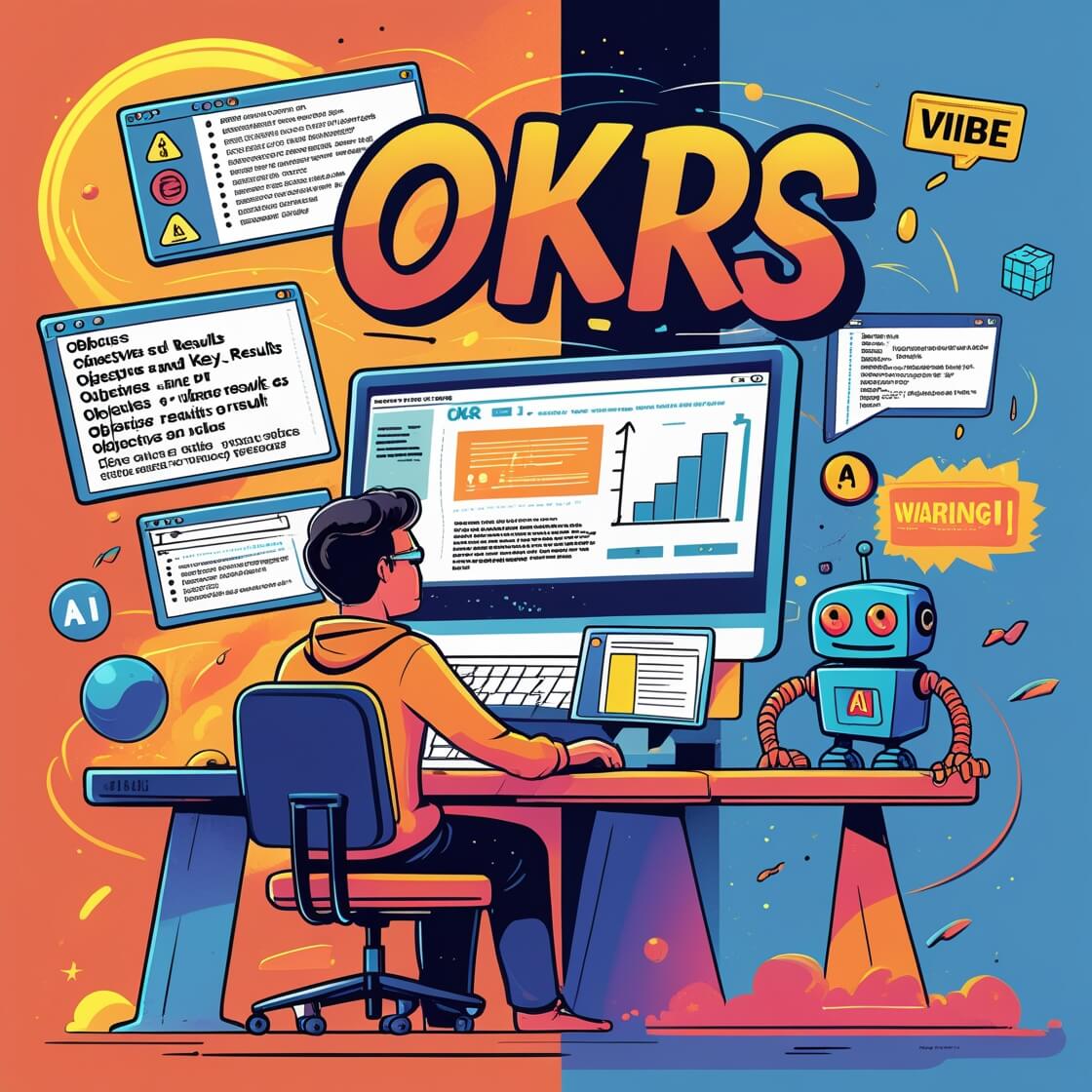The Ultimate Guide for Strategic Execution
For over two decades in UX design and IT architecture, I’ve seen organizations struggle with aligning strategy and execution.
Objectives and Key Results (OKRs) emerged as the solution—a goal-setting framework that turned companies like Google from a 40-person startup into a 100,000-employee tech giant. In this guide, you’ll learn to implement OKRs like a pro, avoiding common pitfalls and leveraging cutting-edge tools.
Why OKRs? Beyond the Hype
OKRs bridge the gap between visionary strategy and daily execution. Created by Intel’s Andy Grove and popularized by John Doerr in Measure What Matters, they combine:
Objectives: Inspiring, qualitative goals (e.g., “Dominate our product category mindshare”).
Key Results (KRs): Quantifiable metrics tracking progress (e.g., “Achieve 30,000 monthly blog views”).
Why they work in 2025:
Focus: Forces prioritization of 3–5 quarterly objectives, cutting “busy work” by 30%.
Alignment: Links team efforts to company missions (e.g., Spotify’s hybrid top-down/bottom-up approach).
Agility: Short quarterly cycles enable rapid pivots amid AI disruptions and market shifts.
Core Principles: Crafting High-Impact OKRs
Objectives: The North Star
Attributes: Concrete, action-oriented, inspiring. Example: “Design a UX so intuitive it eliminates customer service inquiries”.
Pitfall to avoid: Vague objectives like “Improve customer satisfaction.”
Key Results: Your Progress Engine
SMART KRs are non-negotiable:
Specific: “Increase revenue by 15% QoQ.”
Measurable: Use percentages, counts, or binary outcomes.
Ambitious: “Moonshot” KRs aim for 70% completion (Google’s benchmark).
Lead vs. Lag Indicators:
Lag: Revenue (measures outcome).
Lead: Product demo requests (predicts outcome).
Table: Anatomy of a Strong OKR
| Component | Example | Why It Works |
|---|---|---|
| Objective | Become the most efficient HR department in our industry | Inspires, ties to company vision |
| Key Result 1 | Automate 100% of time-off requests, cutting processing time by 50% | Quantifiable, outcome-focused |
| Key Result 2 | Attain 100% completion rate for leadership training | Measurable, time-bound |
Implementation Roadmap: 4 Phases to Success
Phase 1: Cultivate the Right Culture
Transparency: Share CEO OKRs company-wide (as Adobe does).
Psychological Safety: Decouple OKRs from compensation to encourage risk-taking.
Leadership Buy-in: Secure CEO sponsorship early—70% of failed OKRs lack it.
Phase 2: Integrate into Organizational Rhythm
Set Cadence:
Annual Objectives (e.g., “Expand into 3 new markets”).
Quarterly KRs (e.g., Q1: “Secure first enterprise client in Germany”).
Pilot Groups: Start with 100–250 engaged employees (e.g., product teams).
Ownership: Assign KR “owners” for accountability (e.g., CMO owns “20M weekly browser users”) 1.
Table: Quarterly vs. Annual OKRs
| Scope | Annual OKRs | Quarterly OKRs |
|---|---|---|
| Purpose | Strategic vision | Tactical execution |
| Example | “Lead industry in AI innovation” | “Launch 3 AI features by Q3” |
| Measurement | Broad impact | Specific KRs |
Phase 3: Educate and Equip Teams
OKR Champions: Train facilitators to coach teams (Intel’s model).
Workshops: Use templates like “We will achieve [Objective] as measured by [Key Result]”.
AI Tools: Platforms like Tability AI generate draft OKRs from prompts (e.g., “Improve SaaS retention”) 6.
Phase 4: Sustain and Scale
Retrospectives: Hold weekly KR check-ins and quarterly “health scans”.
Scaling Tactics:
Horizontal: Roll out by department (e.g., Marketing → Sales).
Mixed: Deploy across a business unit (e.g., EMEA division).
Top Tools for 2025
Tability ($6/user/month):
AI-powered OKR drafting + progress dashboards.
Best for startups needing simplicity.
OKRs Tool (Free for ≤10 users):
Slack integrations + initiative suggestions.
Ideal for remote teams.
Perdoo:
KPI/OKR integration + strategy maps.
Suits enterprises linking goals to performance.
Asana/PeopleGoal: For bottom-up OKR alignment.
Avoid: Managing OKRs in spreadsheets—real-time tracking is critical.
Advanced Tactics from the Trenches
Stretch Goals: Uber’s KR: “Reduce peak pickup time to <10 minutes” pushed innovation.
Cross-Functional OKRs: Spotify ties engineering, product, and marketing KRs to one objective (e.g., “Boost user engagement”).
CFRs (Conversations, Feedback, Recognition): Adobe’s secret weapon—weekly manager check-ins boost KR achievement by 40%.
Pitfalls That Derail OKRs (and Fixes)
“Business as Usual” KRs:
Bad KR: “Publish 10 blog posts.”
Fixed: “Increase organic traffic by 25% via 10 keyword-optimized posts”.
Over-Cascading:
Bad Practice: Dictating team KRs top-down.
Fixed: 60% bottom-up creation (Google’s rule).
Annual-Only Tracking:
Risk: Missing mid-course corrections.
Fix: Bi-weekly KR reviews using tools like Weekdone.
Key Takeaways
Start small: Pilot with one team using OKRs Tool or Tability.
Train OKR champions to coach teams on SMART KRs.
Review progress weekly—never annually.
Scale horizontally once pilots hit 70% KR completion.
“OKRs aren’t a task list—they’re a compass. They align your march toward impact.” —Adapted from John Doerr’s Measure What Matters
Ready to launch? Explore these resources:
By 2026, companies using OKRs with quarterly KRs will outpace competitors by 58% in revenue growth . Start today—your breakthrough awaits.


